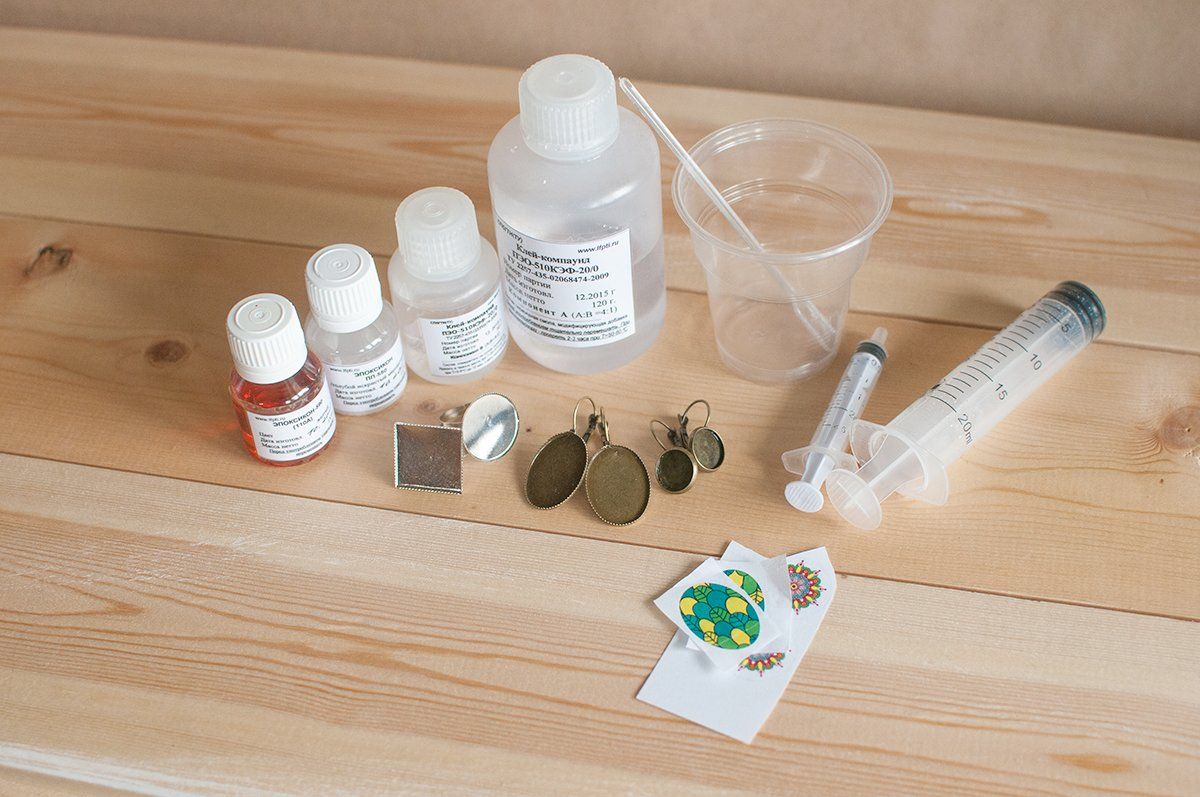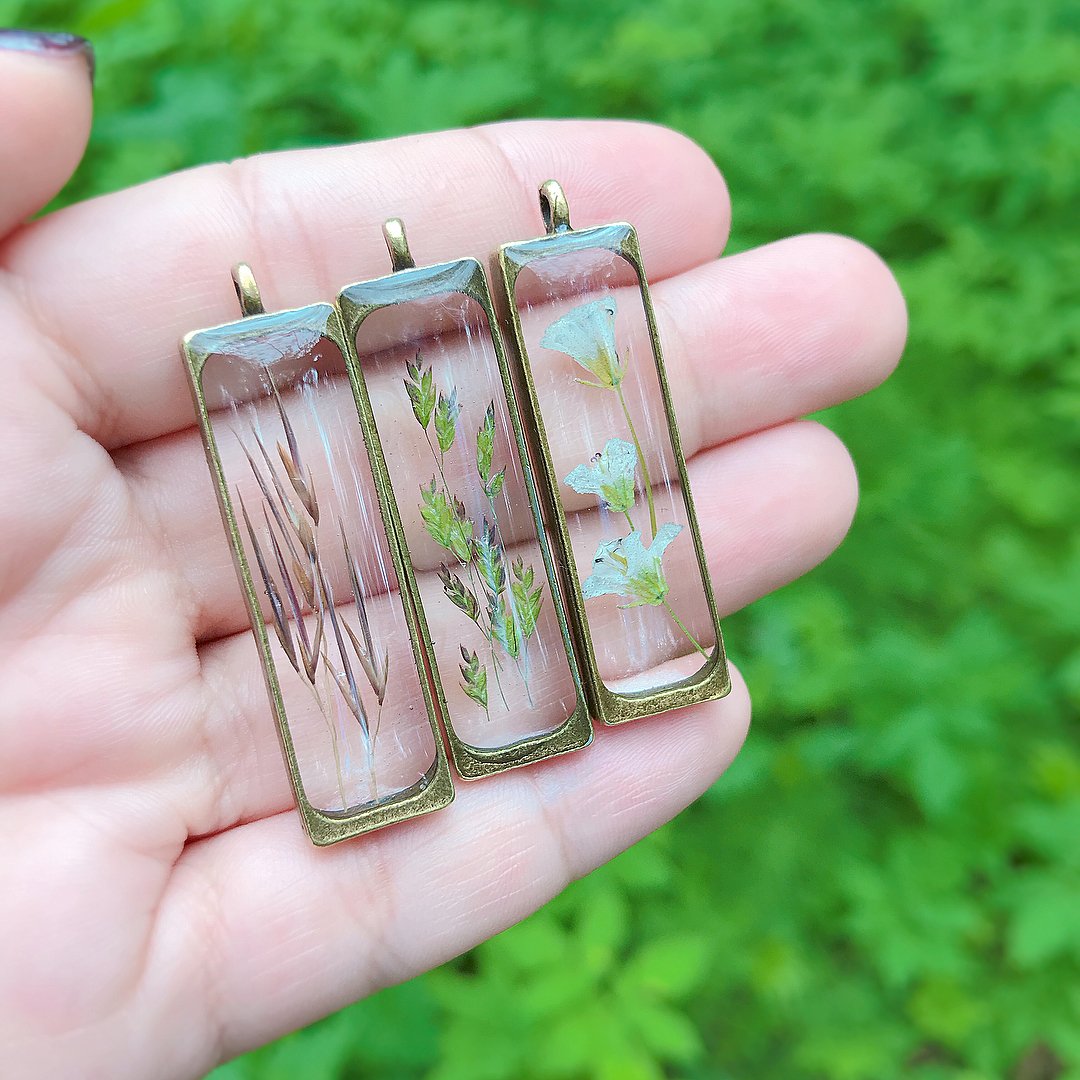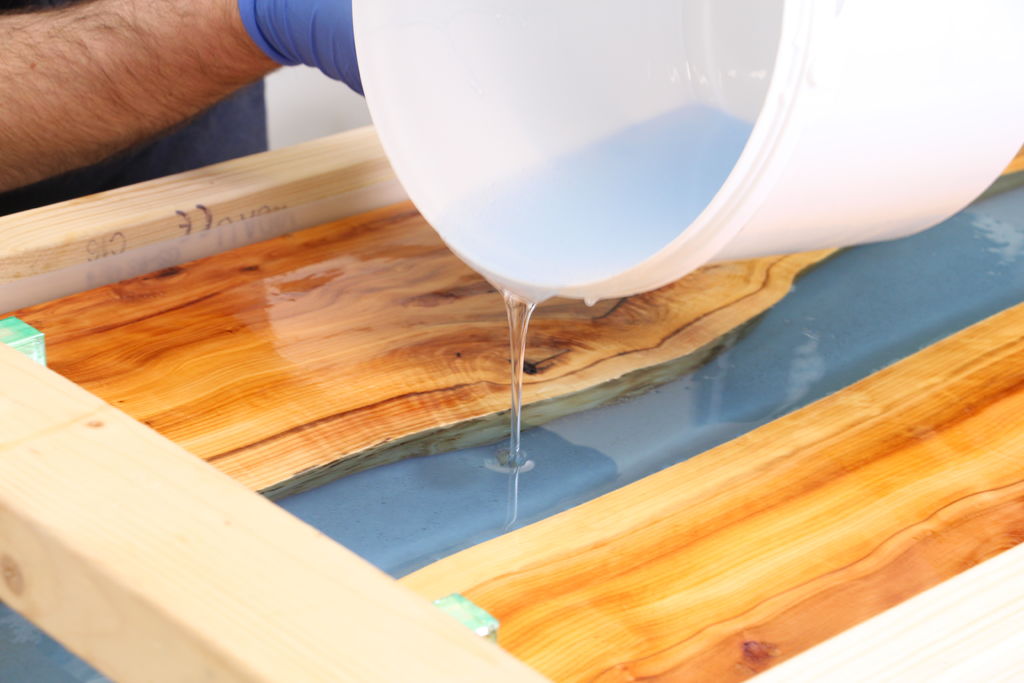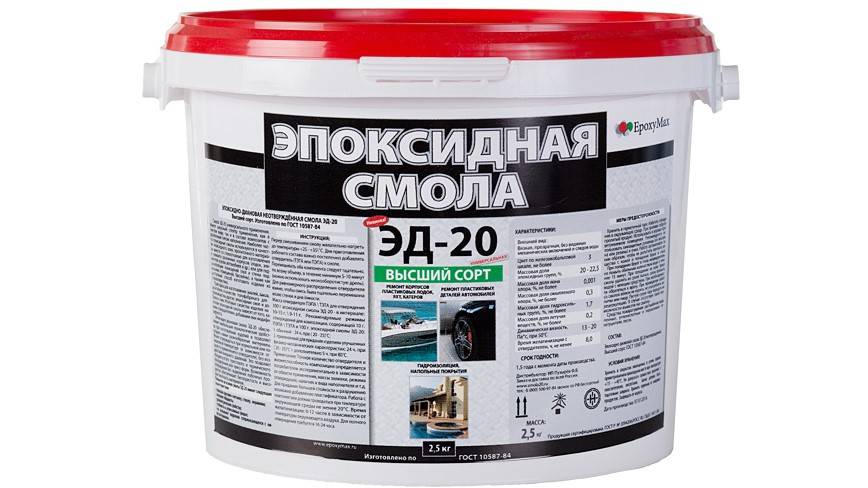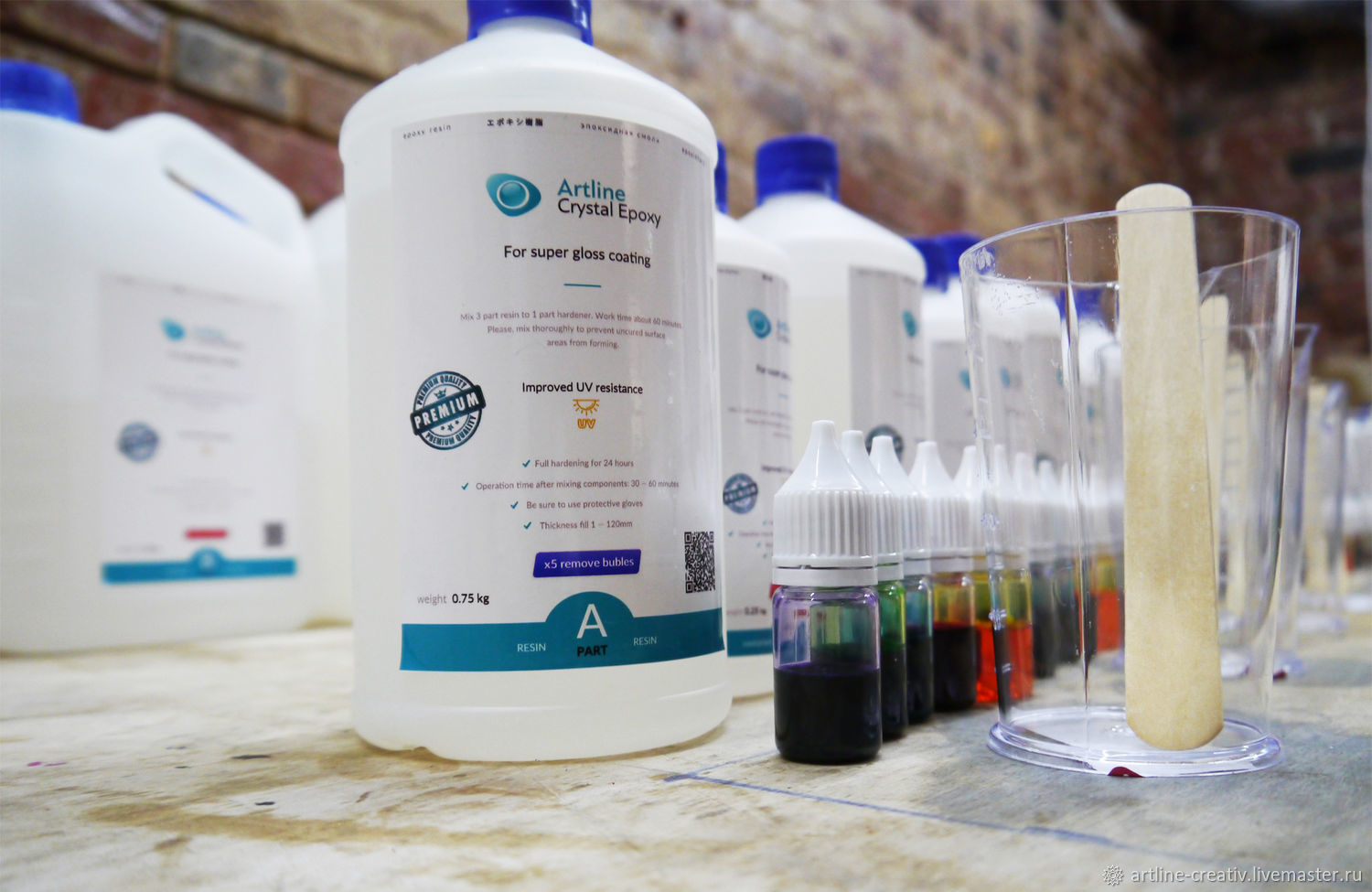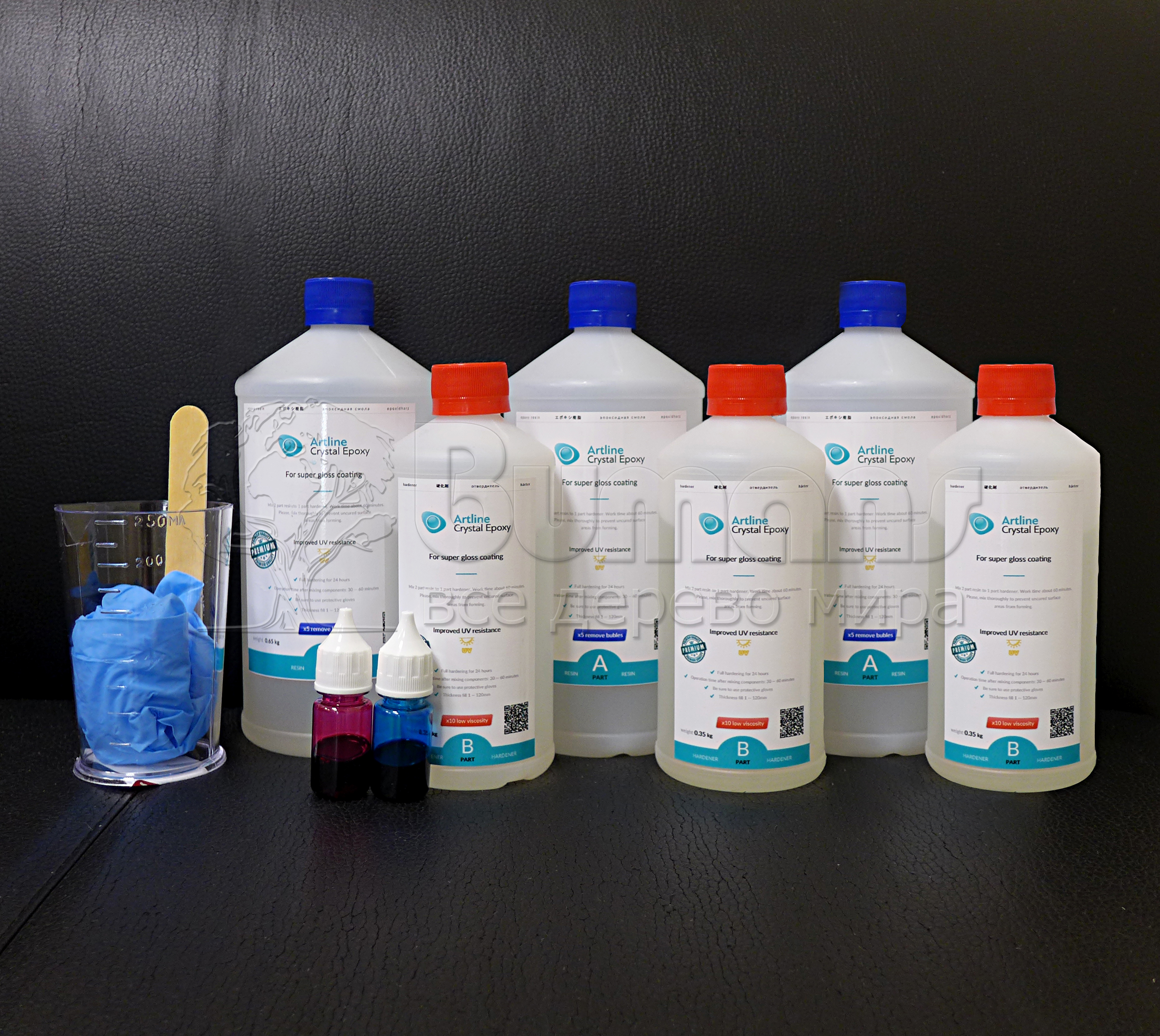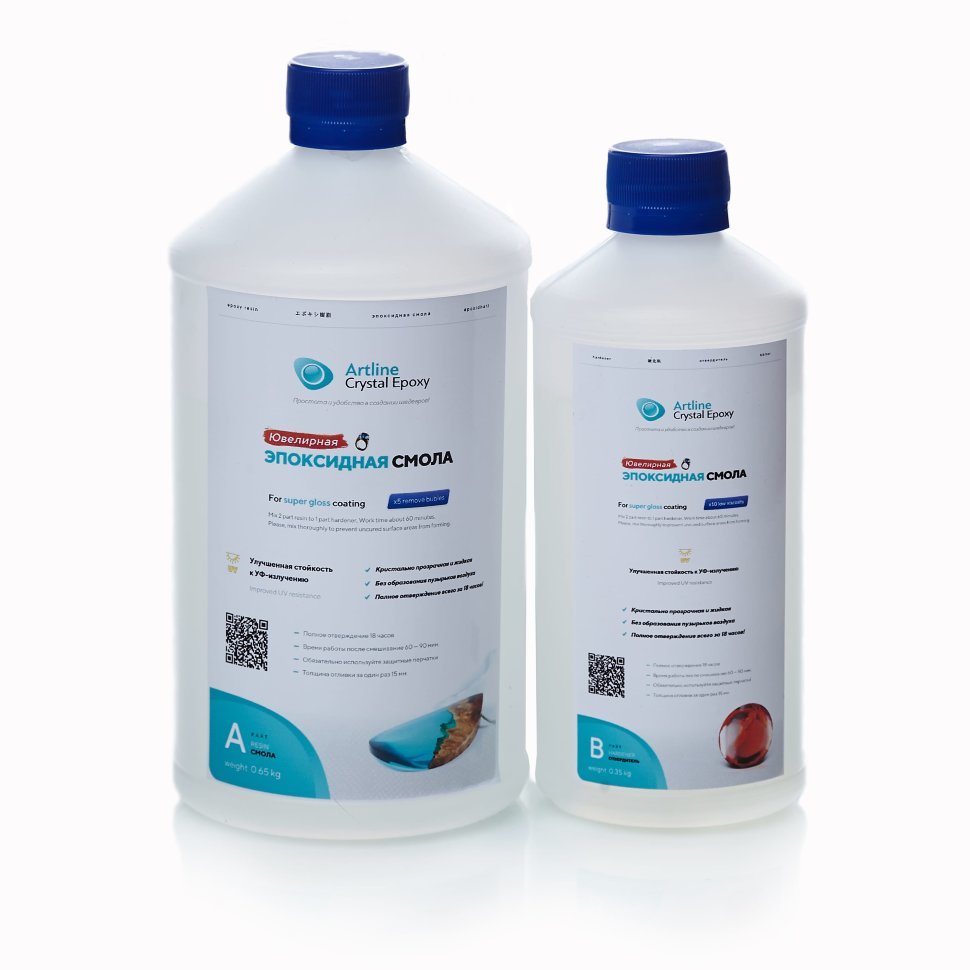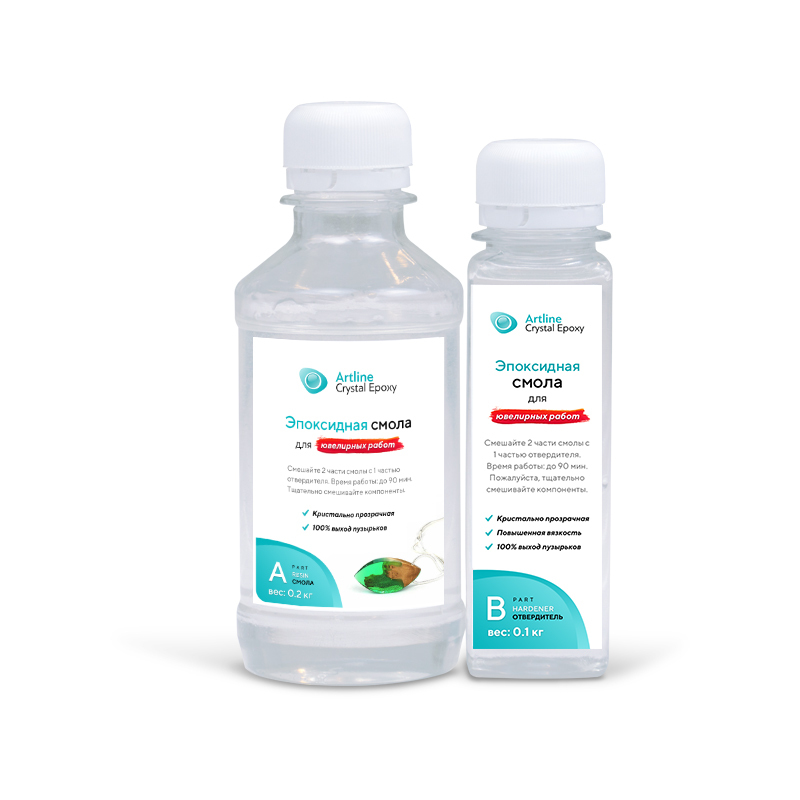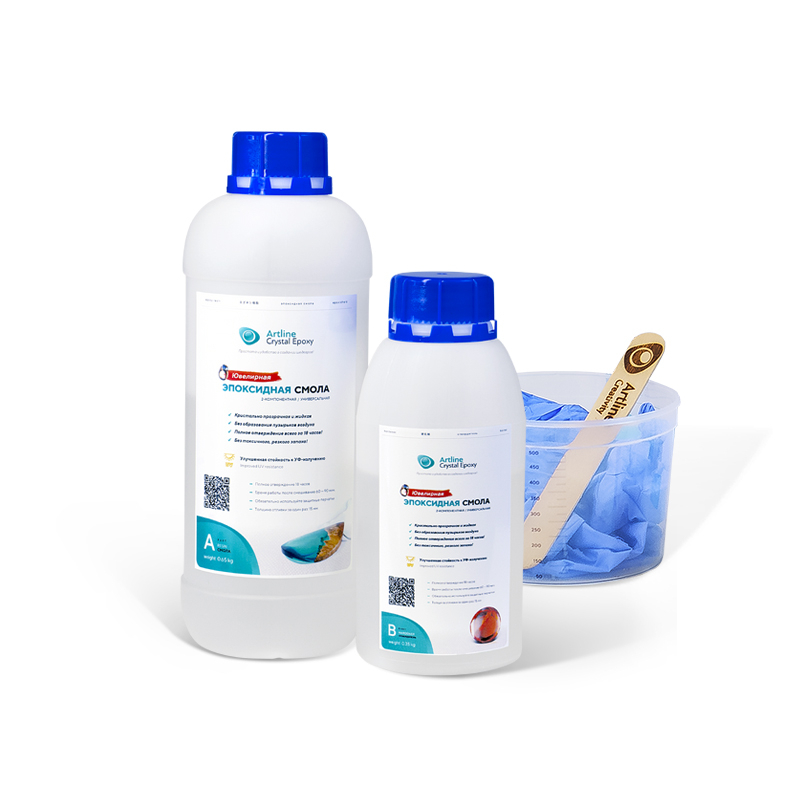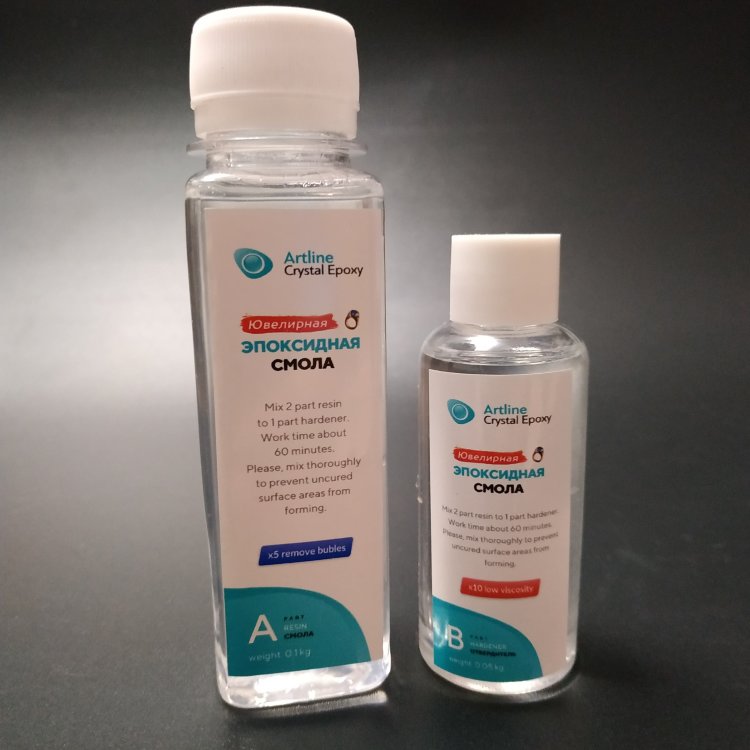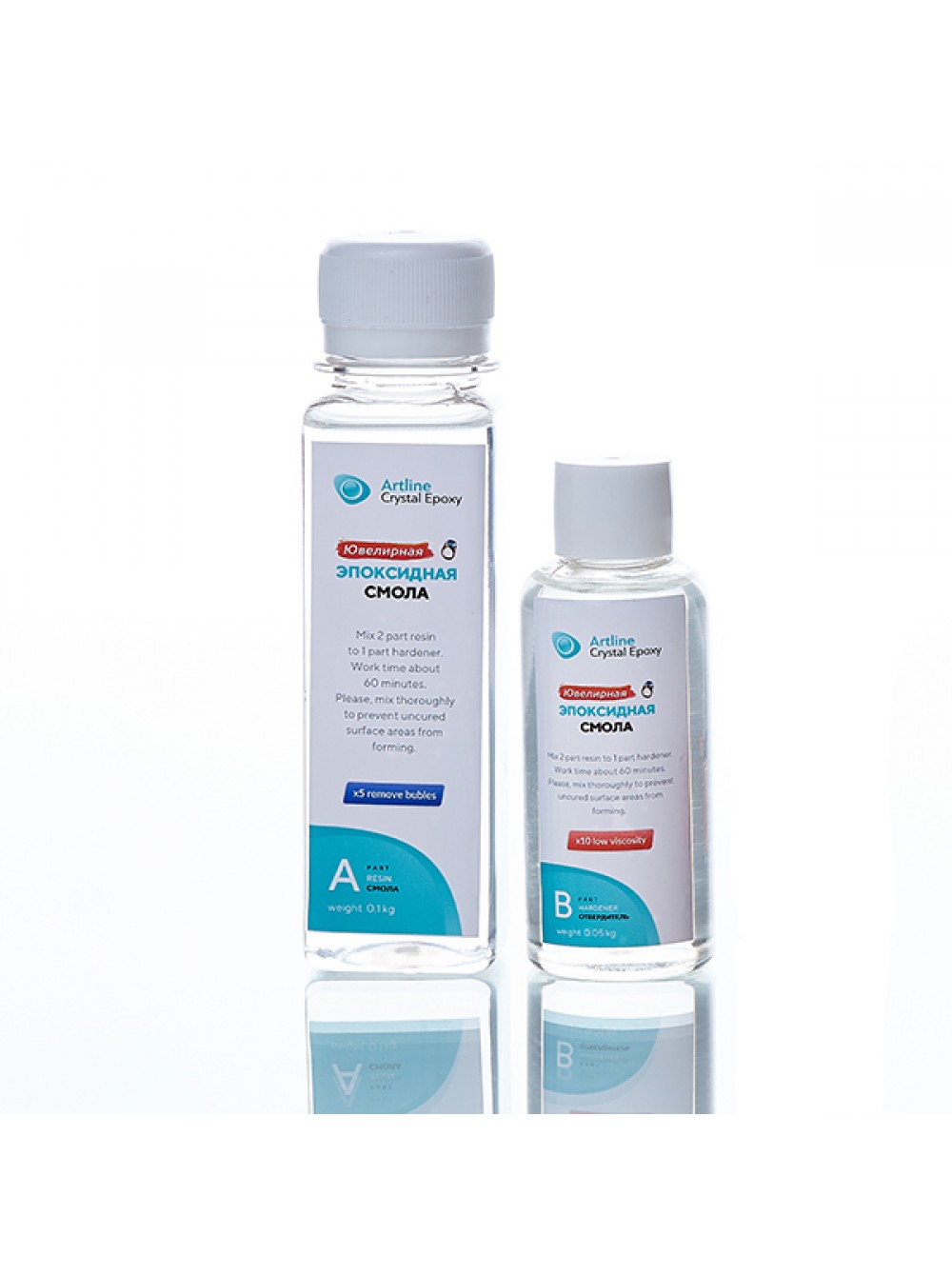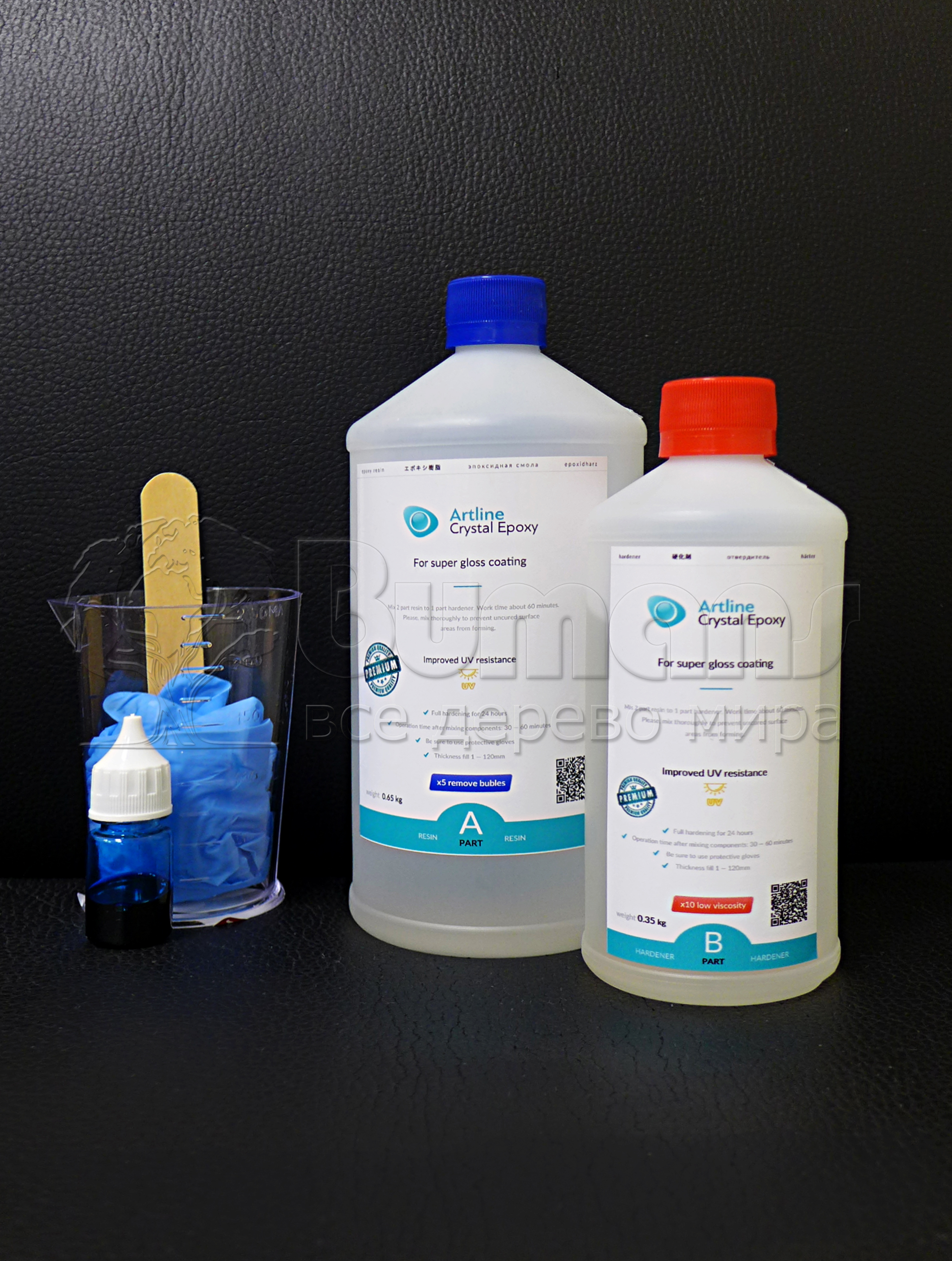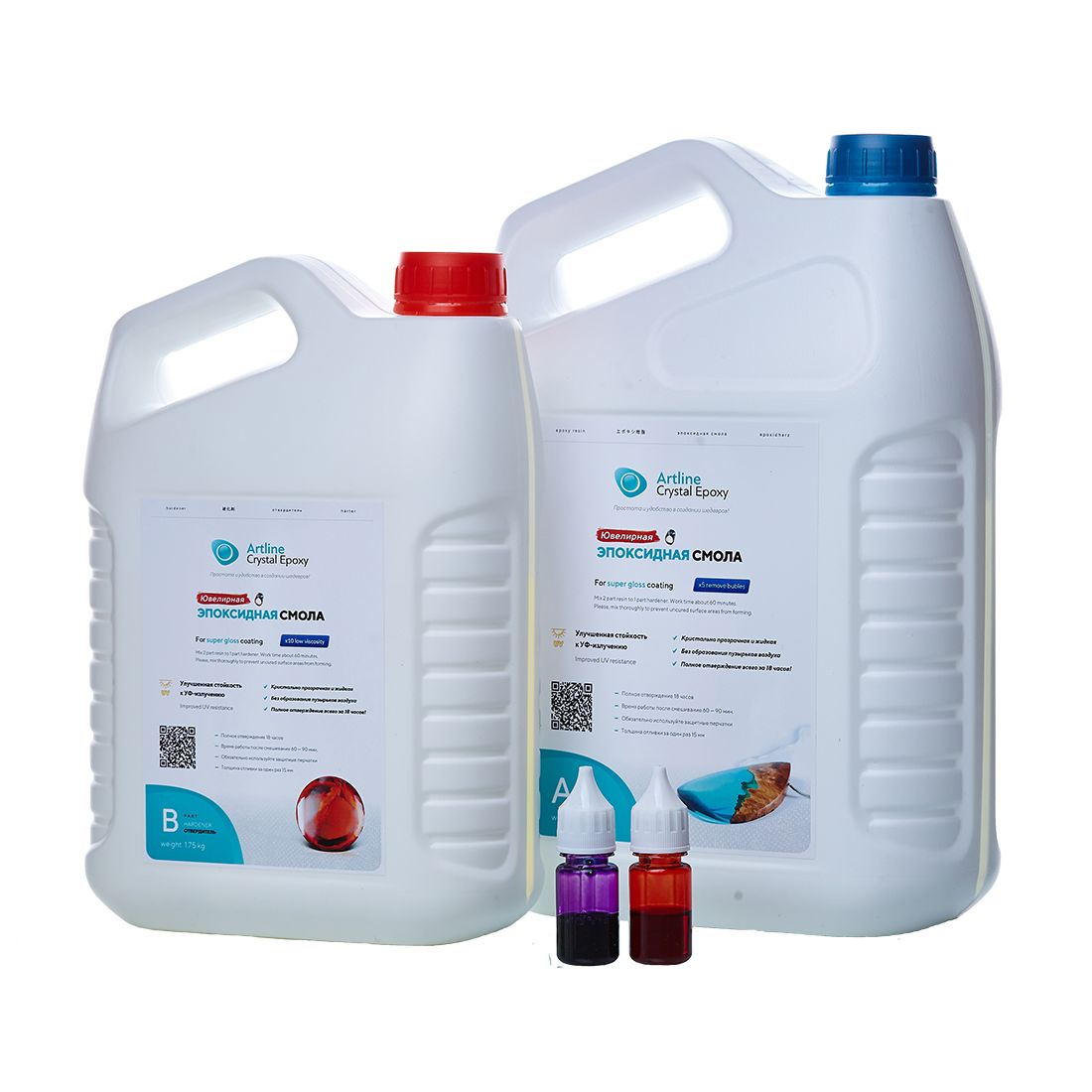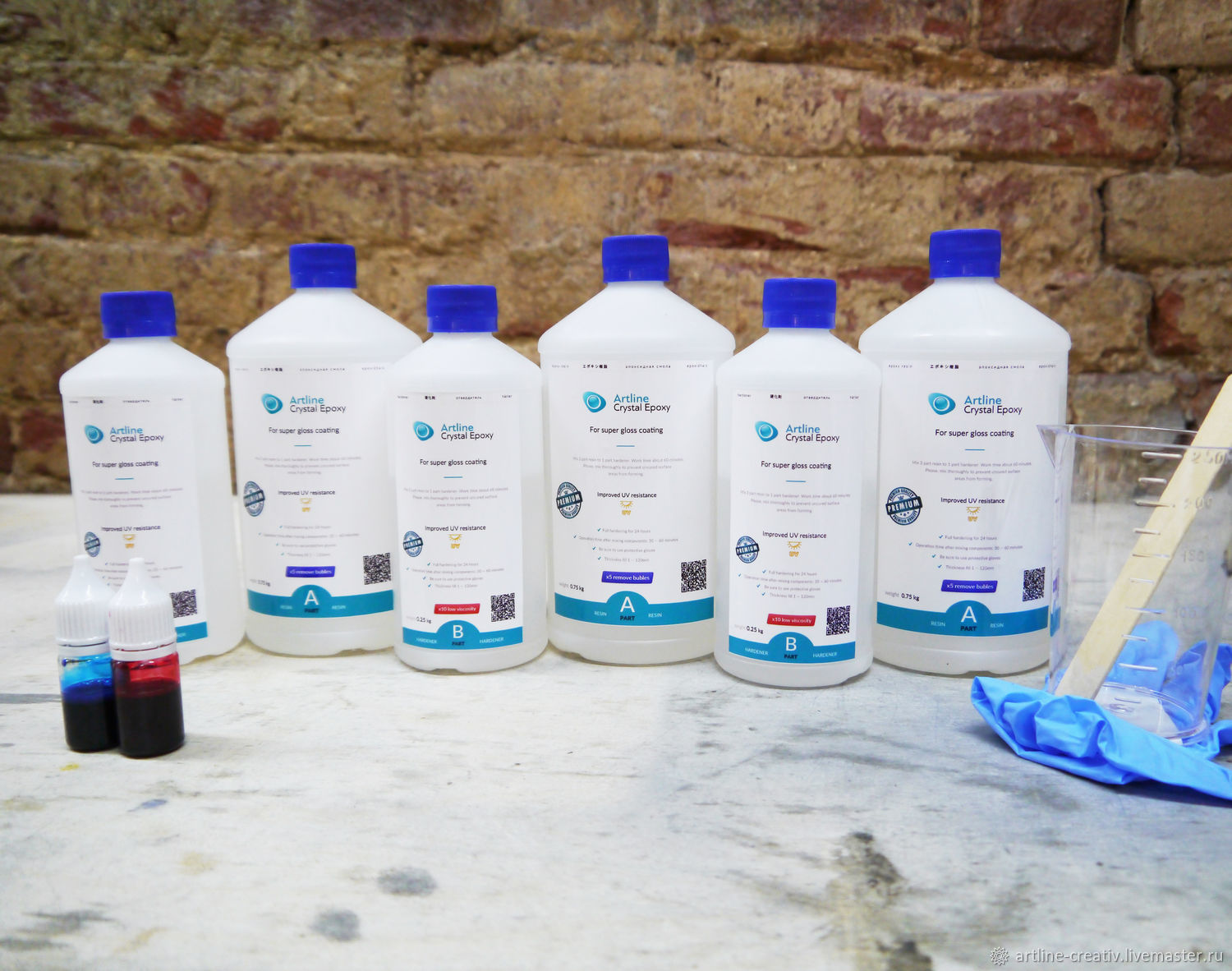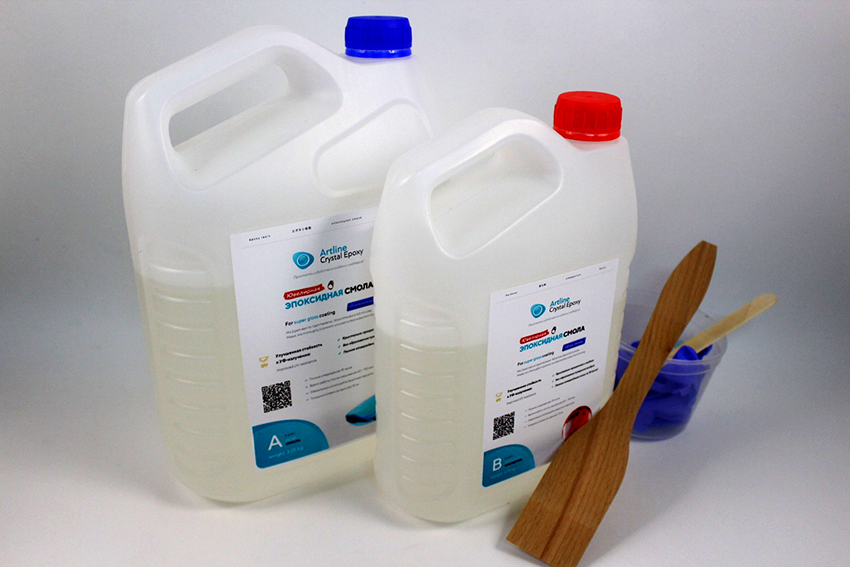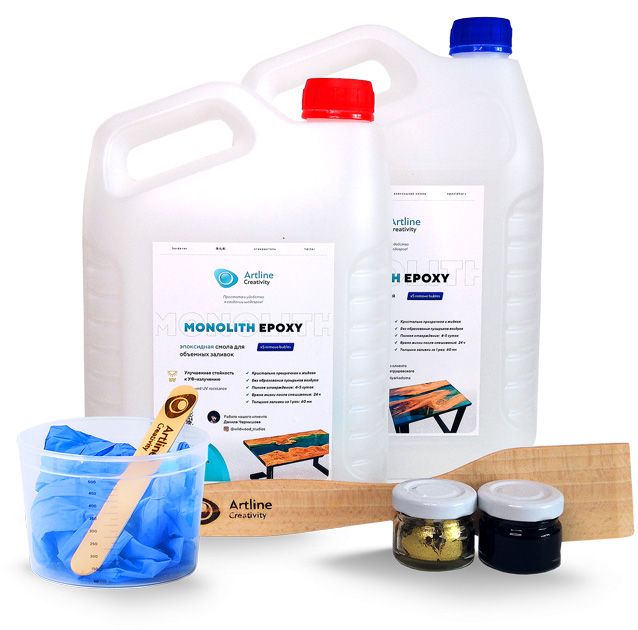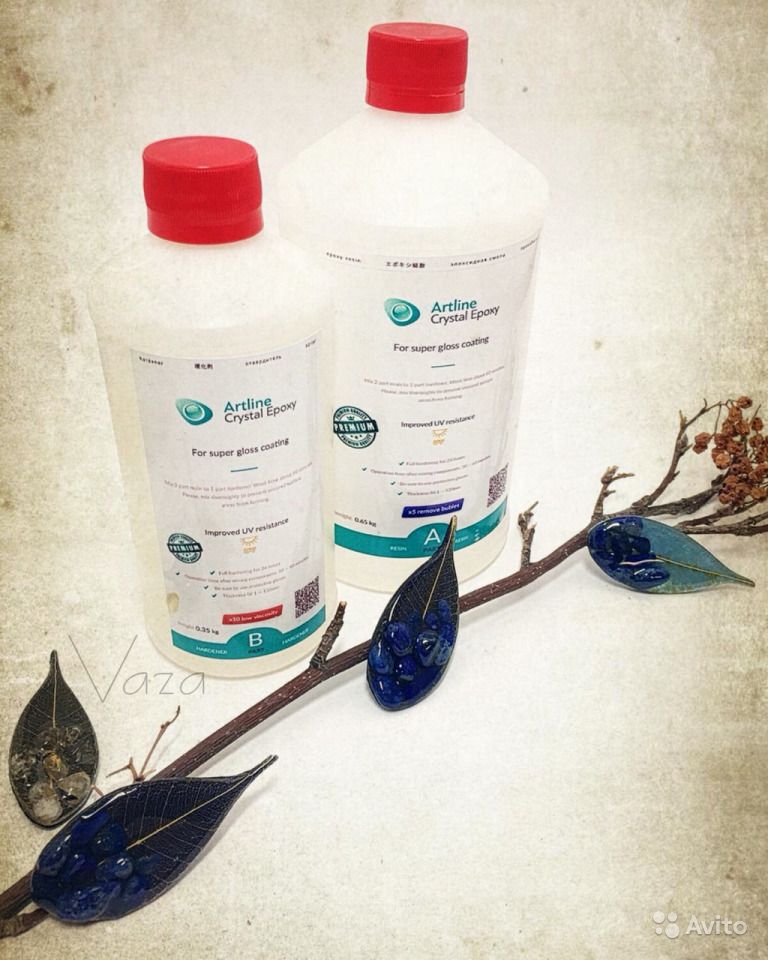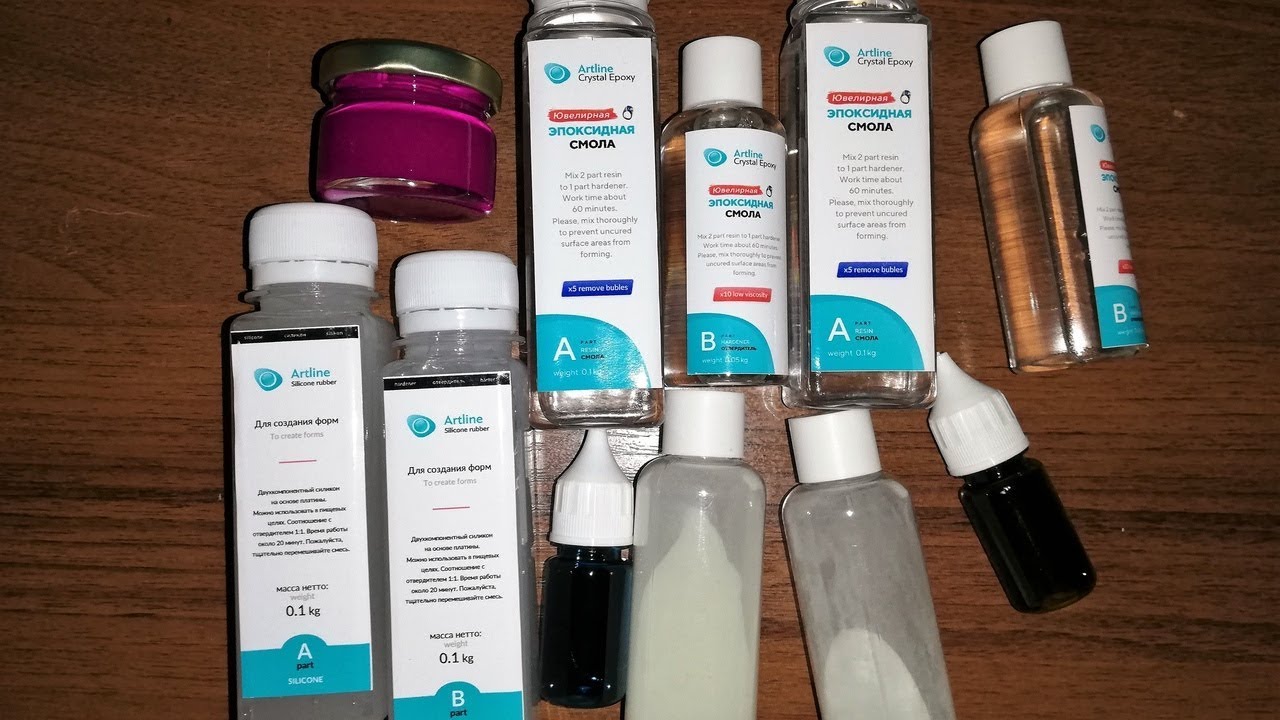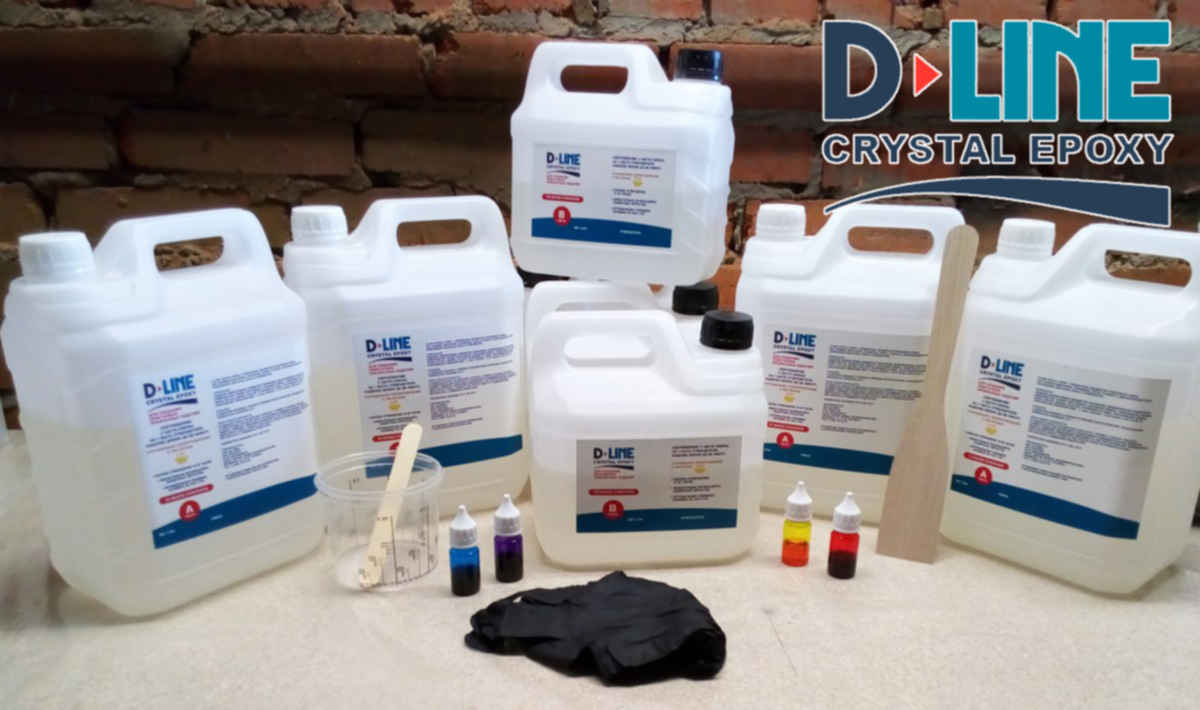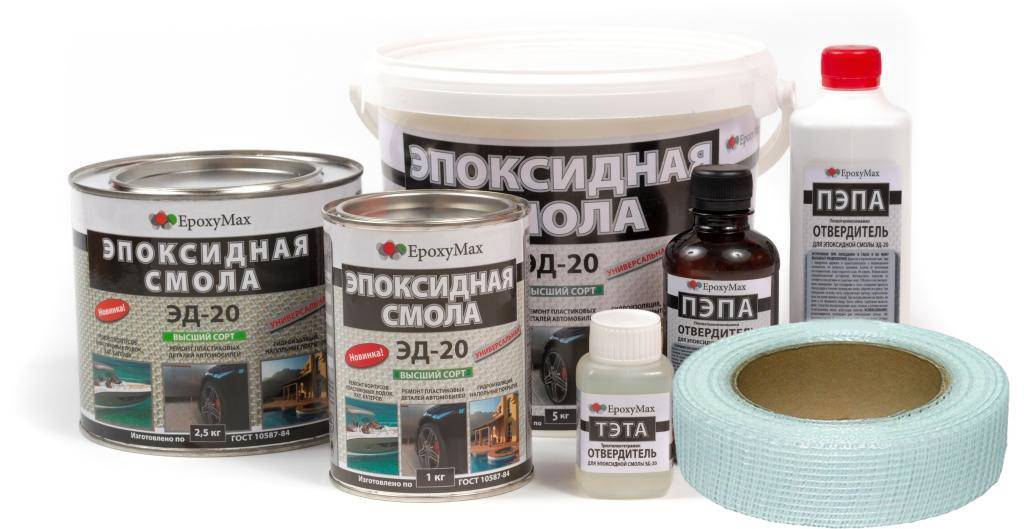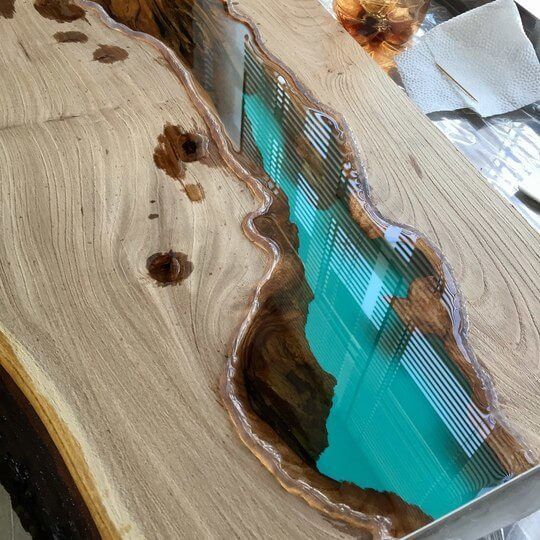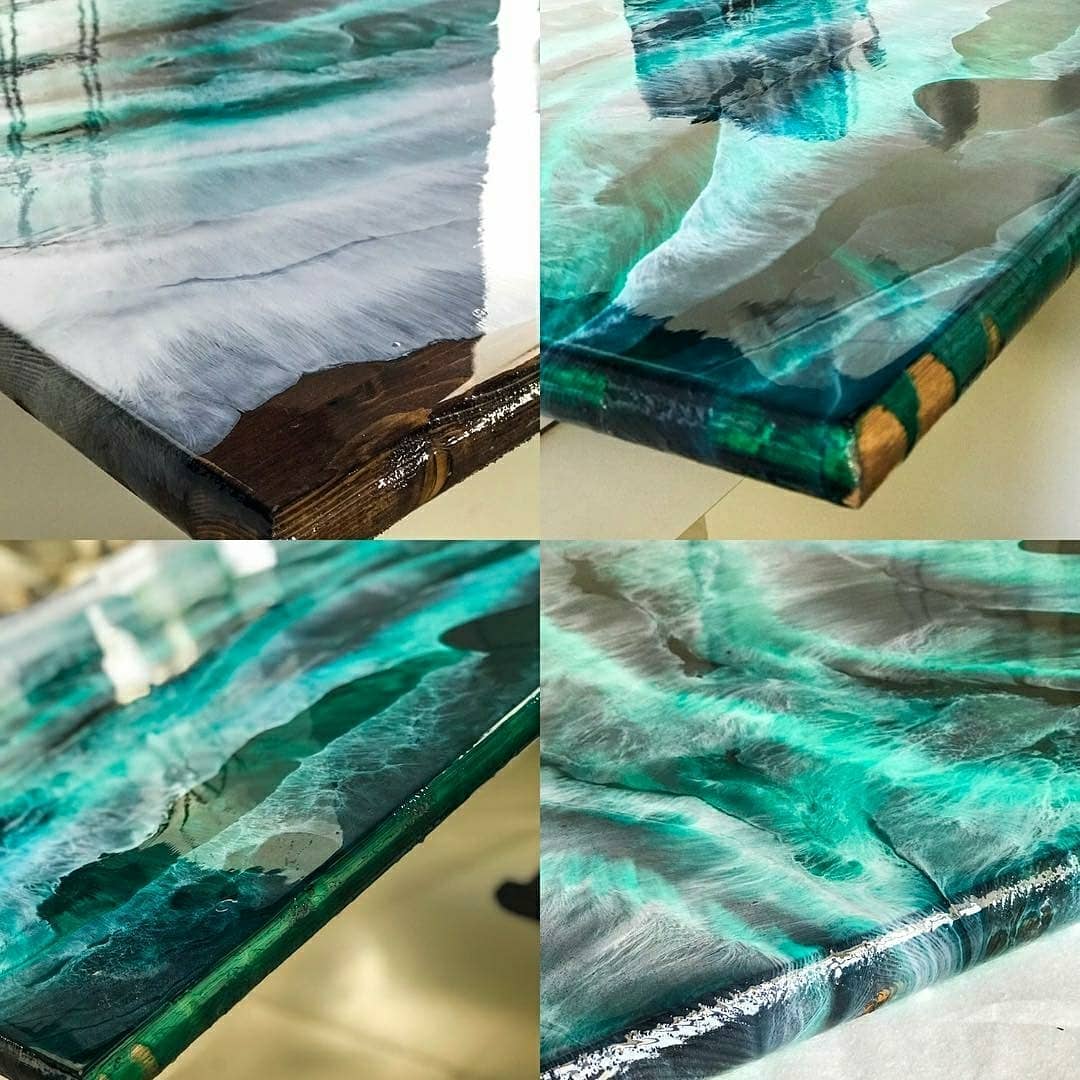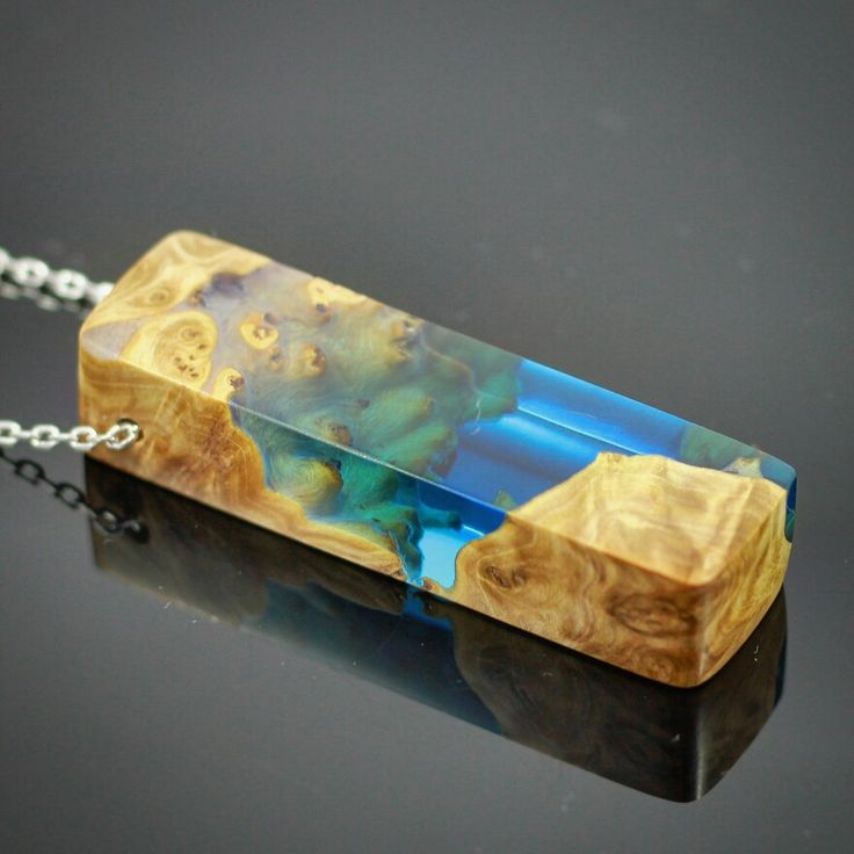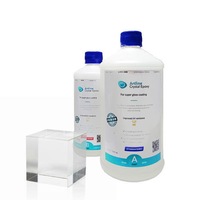Thickness degree, primary thickening time, full hardening time
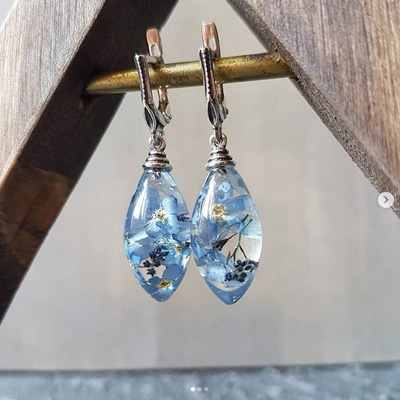
PEO-510KE-20/0
it
was my first pitch. Comfortably liquid, not
like water, but thinner than jelly. When warming up
becomes even more liquid. Gives
enough time to prepare for
filling, pot life at 28 ° С
three hours before thickening. Time
primary gelation about 3-4
hours, after which another 2-4 hours (depending on
temperature) you can work with it. V
thickened state, good
lenses, and in liquid it is great for
filling balls with fine filling.
Freezes completely in 48 hours. For me personally
this is inconvenient since I have large volumes.
For me, this is the only negative when working.
with her. The solution to this problem is to conduct
curing at temperature T = 30-40 ° С
or transition to a "faster" grade PEO-610KE-20/0.
Magic
Crystal 3d
How
I already said, the thickest of all. After
dilutions in consistency, like jelly.
It was extremely inconvenient to work with her at first,
it is difficult to fill a ball with a complex
filling. The lifetime of this resin is only
about 30 minutes. It was unpleasant too
surprise after PEO-510KE-20/0. We must hurry
because the resin starts to pick up
viscosity almost immediately. And in half an hour it
already a thick substance with which almost
impossible to work. But a significant plus -
she completely solidified in 12 hours: in the evening
flooded, in the morning you can get it. By this
reason I have been using it for over a year.
Epoxy
Crystal PLUS
Medium thick,
perfectly tolerates a water bath + vacuum
camera. Degasses easily enough if
warm. If you do not warm up, the foam remains on
surface. A little, but it remains. Boils
strong enough. Primary time
gelation for about an hour and a half.
Then it begins to thicken gradually, and more
you can work for about a couple of hours.
Freezes in 24-36 hours depending on
ambient temperature.
Poly
Glass
Because of
density reacted poorly to water
bath, and just as badly degassed in the chamber.
I had to warm up for a long time, after which
degassed to normal.
I used it only 1 time, I don't remember exactly,
how it froze. Seems like Epoxy resin
Crystal PLUS.
D-line
Crystal
Epoxy
If
do not take into account the case when you left
lining, the behavior of the resin is very
interesting. It is very liquid at first, like
water. But it thickens in about 40 minutes, sometimes
even faster. You need to work quickly, otherwise
everything will turn to jelly in the process
filling)) The manufacturer indicates the time
full cure 18 hours, but I have neither
it never happened that way. According to my data
it took 20-24 hours for complete curing.
Artline
Crystal epoxy
This
the resin acts according to the D-lineCrystalEpoxy resin scheme.
Very liquid, gains thickness in 30-40 minutes,
freezes in 24 hours completely.
Optical clarity, flat fill, machining and safety

PEO-510KE-20/0
Excellent
transparency characteristics after
solidification. The resin does not turn yellow! I have
castings from three years ago, they are not
yellow. I think these are excellent indicators.
I got used to filling in flat elements,
without waiting for thickening. In flat fills
does not spread, holds its shape, freezes without
ripples. Stitches in large flakes, does not
dusty, almost no smell. It grinds well, in
moderately hard, polished to mirror-like
shine and glass effect. Security
confirmed by an independent
toxicological examination:
in the hardened state the resin is harmless
for health.
Magic
Crystal 3d
WITH
the last two were the pad. Before
mixing it was transparent, after
mixing bubbles, not
degassed even after a water bath.
After solidification, it was milky white,
opalescent. At the same time, the exothermic
there was no reaction, she did not warm up. I sent
these batches back to production, after
examination I was told that “if
warm up the resin to 80 ° С,
then it will not opalesce. " Strange
answer. It seemed to me that the resin should be bought,
mix and fill, not dance around
her with tambourines and baths. In the end, they returned to me
money for one batch. The resin turned yellow
in six months. A very unpleasant surprise
since buyers began to write to me on
this occasion. In flat fills behaves
good, but eventually turns yellow too. Stitching
fine dust with a strong odor. Dust
all around is covered. And again a minus. Without
respirator is impossible to work.
Epoxy Crystal PLUS
Excellent
transparency indicators after solidification.
I work for a little over a year, until there are no complaints
It was. The manufacturer claims that it does not
turns yellow ... it remains to wait another year or two,
to compare with PEO. I must say that
a similar situation regarding
resistance to yellowing and three others
PolyGlass resins,
D-lineCrystalEpoxy,
ArtlineCrystalEpoxy.EpoxyCrystalPLUS
behaves well flat, does not run away,
freezes without ripples, thickening for pouring
I'm not waiting. Stacked with medium-large
flakes, almost no dust, almost no smell.
Easy to grind, polish to mirror finish
shine and glass effect.
Poly
Glass
After
solidification is optically transparent, without
problems. My personal data on yellowing
no. Thick enough for pouring flat
samples, but I froze with ripples and
cells viewed under
a certain angle. I reported this
to the manufacturer, but did not receive an answer.
Poured once, do not grind-polish
had to.
D-line
Crystal epoxy
Optically
completely transparent. In flat casting
behaves well due to speed dialing
viscosity does not run away. Stitching with fine
strong odor dust, work
I recommend only wearing a respirator.
Artline
Crystal epoxy
Everything
characteristics like D-lineCrystalEpoxy.
Small difference - frozen in flat
casting with a slightly noticeable cellularity.
How to work with resin?
When working with resin, the main thing is to carefully observe the proportions, since an insufficient or, conversely, too large amount of hardener has the most negative effect on the functionality of the final composition. With an excess volume of the hardener, the composition loses its strength. In addition, excess can be released to the surface as it hardens. With a lack of hardener, some of the polymers remain unbound, such a composition becomes sticky.
Modern formulations are usually diluted in the proportion: for 1 part of the curing agent - 2 parts of ES, the use of equal proportions is allowed. Stir the epoxy and hardener thoroughly so that the consistency is uniform. Stirring is performed slowly, if the movements are sharp, bubbles will appear.
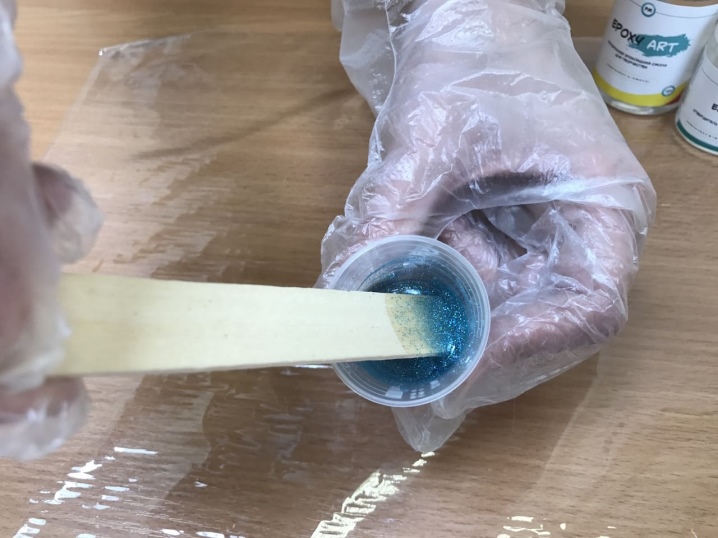
After pouring, wait until the resin hardens. In the course of polymerization, ES goes through several stages.
- Liquid state. The mixture of the main components easily drains from the stirring rod, this moment is optimal to pour the composition into the mold.
- Thick honey. In this state, the mass does not lie down in a thin, even layer, but easily fills a small volume.
- Candied honey. At this stage, it is not possible to carry out any actions with the resin, the only possibility of use is gluing surfaces.
- The transition from honey to rubber. At this point, the resin does not need to be touched, otherwise the formation of polymer chains can be disrupted.
- Rubber. The mass of the components has already entered into interaction and has ceased to stick to the palms, however, its hardness is not enough yet. In this state, the workpiece can be twisted and deformed.
- Solid. This resin does not bend, twist, or pick out.
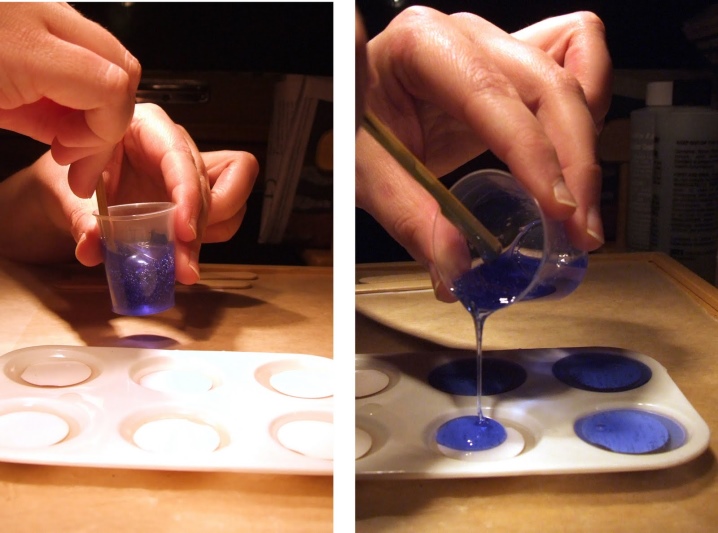
Epoxy from different manufacturers has a different cure period, it is determined only empirically.
However, even without varnish, its surface looks glossy and shimmery.

How to choose and use epoxy for potting countertops
Countertops in any kitchen are constantly exposed to thermal shock, aggressive chemicals and sometimes mechanical shock. It is also necessary to take into account the fact that a decent thickness of the countertops is always poured. And don't forget about the decorative qualities of the finished product. The most acceptable formulations for work in this direction for beginners are MG EPOX STRONG and MG EPOX WHITE. More experienced craftsmen use the well-known ED-20 and a bunch of different plasticizers.
Countertops that imitate the sea and the shore are a small miracle that you can admire endlessly
How to use the epoxy resin selected for pouring the countertop, the step-by-step process of its creation, as well as a lot of important nuances, are described in detail in the video below.
What are the differences between epoxy, vinyl ester and polyester resins?
Epoxy
and vinyl ester / polyester resins include
to two different families.
Epoxy
resins are cured with amine hardeners
at room temperature and have
excellent adhesion and mechanical
properties. The resins themselves are practically not
have expiration date limitations.
The hardener has a shelf life of 1 year.
closed containers.
Vinyl ester / polyester
contain unsaturated polyester or
a hybrid vinyl ester base and
are cured according to the catalytic scheme
peroxide, forming a solid resin with
the formation of spatial connections.
Measures
safety when working with resins
Is always
need to work in disposable
gloves and wear protective goggles if
splashes possible. Work should be done in
respirator. Resin can cause
skin irritation. Avoid direct
contact of resin, hardener and their mixture with
skin and wear gloves and protective
clothes. Rinse off any resin that gets on your skin.
liquid soap immediately after contact. Never
do not use for these purposes
solvents. Avoid breathing vapors
resin. Use resin only in areas with
good ventilation. In tight places
provide fresh air and
extraction of vapors. Wear a respirator with
a filter for organic vapors. Respirator
also necessary for sanding
cured resin. If the curing time
less than a week, you must have
organic and dust filter. Polyester
resins are more dangerous than
epoxy.
Originals:
and
Description of species
There are several classifications of ES, most of them are rather technical in nature.
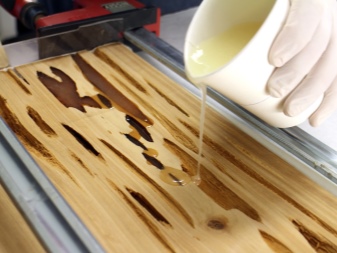
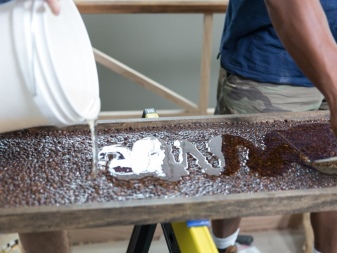
Epoxy Diane
Widely in demand in the industrial sector and in everyday life. Includes several varieties.
ED-22 - begins to crystallize during prolonged storage. It is a versatile raw material, but it is used only in the industrial field.
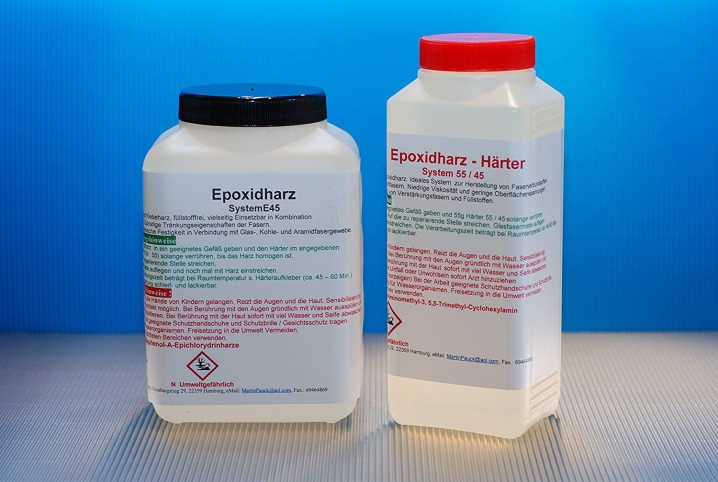
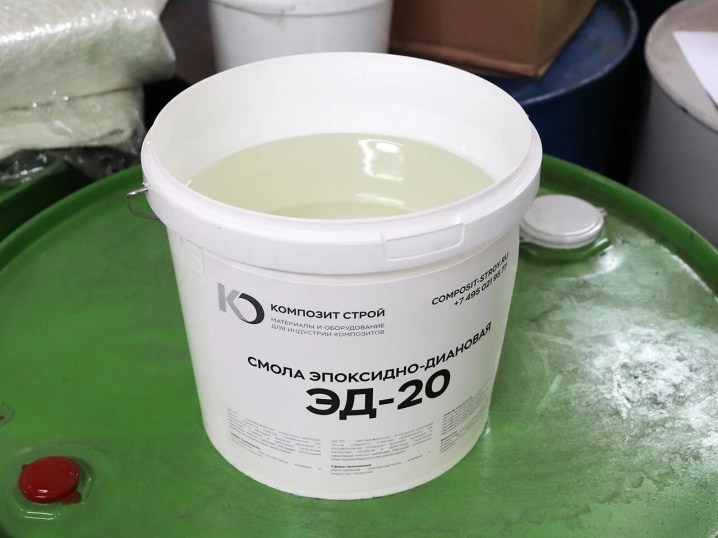


ED for paints and varnishes
These include.
E-40 and E-40r are quick-drying resins for paints and varnishes. They can be included in the structure of varnishes, enamels and putties.
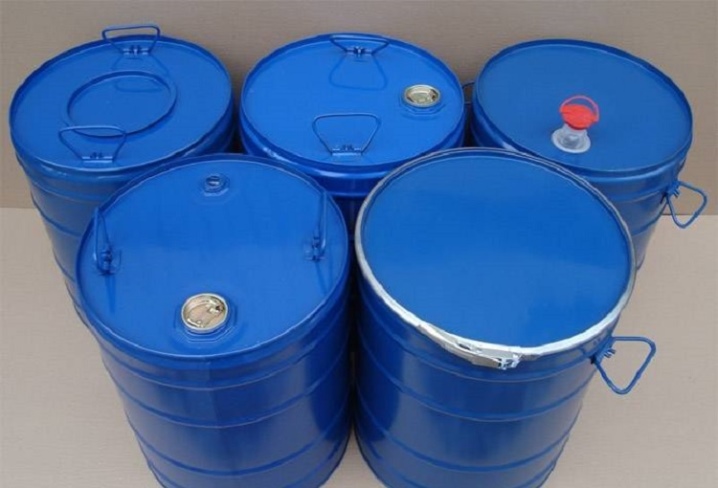
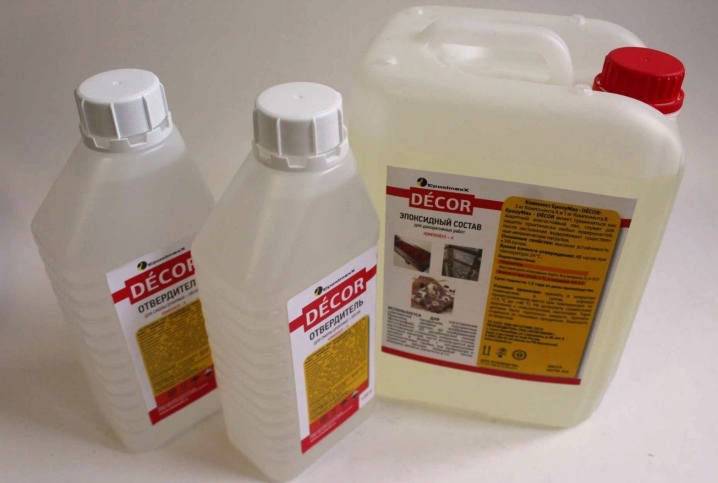
ES in the structure of varnishes and paints can be seen in most modern household appliances.
Aluminum, cast iron, lithium and cast steel work well with this material.

Assortment overview
Artline offers a wide range of epoxy resins, which allows you to choose an option for any purpose. A number of the most popular types can be noted.
Universal
Epoxy resin Artline Crystal Epoxy is transparent, so it is perfect for the implementation of any creative and renovation ideas. A distinctive feature of the product is the minimum viscosity, which guarantees easy air release, and also allows the resin to penetrate into the most difficult embossed surfaces. That is why this composition will be an excellent solution for priming or covering wood.
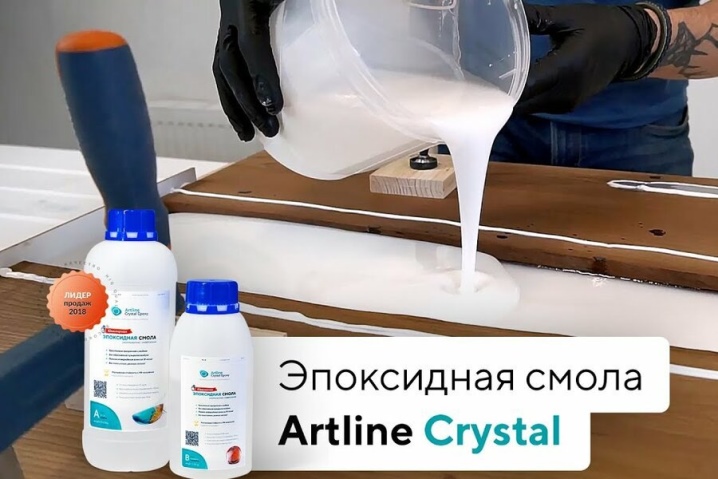
Artline Crystal Epoxy boasts incredibly fast polymerization, sometimes reaching 18 hours. It will not be difficult to work with such a composition, since it does not have an unpleasant odor.The fill thickness can be 12-15 mm.
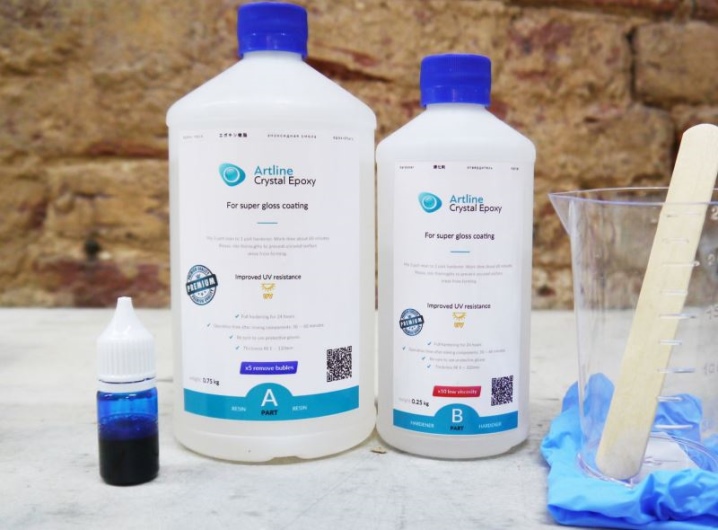
Drawing and jewelry
A distinctive characteristic of this product is the presence of a viscous structure, which makes it possible to create volumetric shapes without problems. Among the main components are phosphor and various metallic pigments. Curing occurs as quickly as possible, which greatly simplifies the process of working with the material.
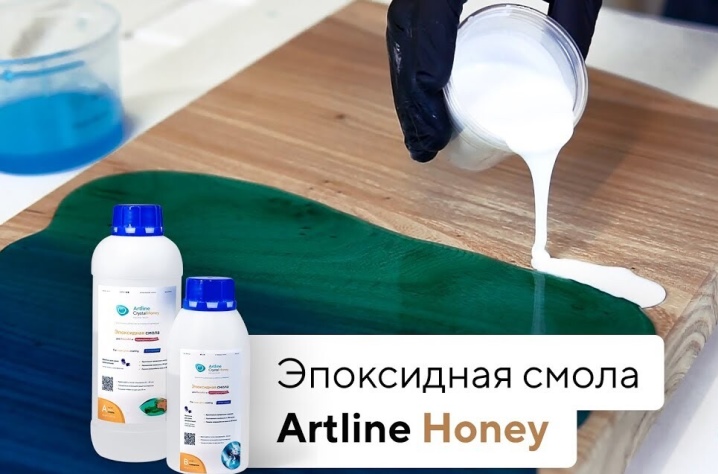
This type of Artline epoxy is crystal clear, and the potting thickness is 15 mm.
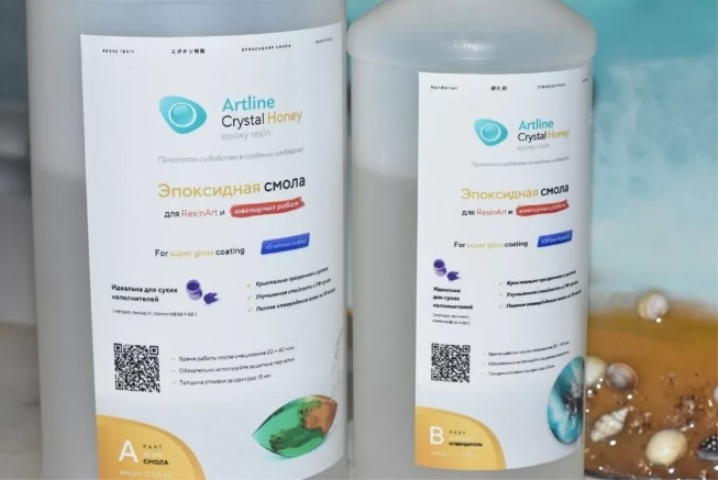
Thick fillings
The peculiarities of this product are its unique structure and low level of viscosity, which allows it to be used for high-build fillings. The developers managed to create a special formula that slows down the curing process. Thanks to this, in the process of work, there is no boiling, turbidity and other similar problems.
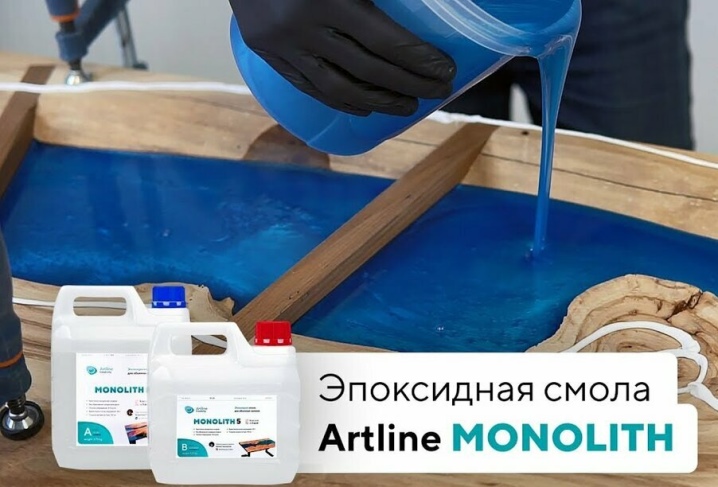
This type of epoxy from Artline is renowned for its crystal clarity and ability to withstand UV rays. The process of complete curing takes an average of 5 days, which favorably distinguishes the resin against the background of other varieties.

Ultraviolet
As you know, ultraviolet rays negatively affect any coating and material, epoxy is no exception. That is why the company has created a unique product that is still able to withstand the negative effects of UV rays and not deteriorate under their influence.
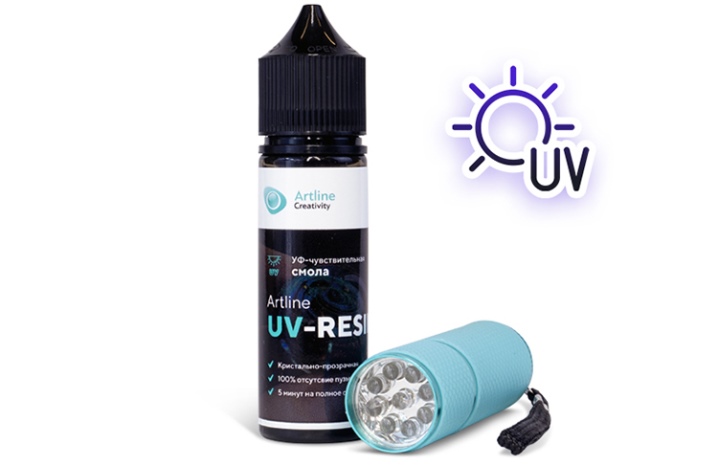
Injection plastic
Artline Liquid Plastic epoxy boasts a two-component system that was created to produce a monolithic plastic. The product is distinguished by the fact that it freezes extremely quickly - this greatly simplifies the process of working with it.
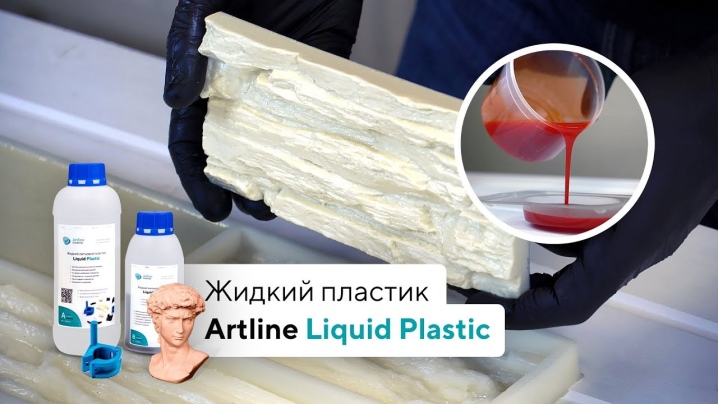
Artline Liquid Plastic was developed in order to produce decorative elements of furniture, as well as various souvenir products. The molding plastic of the company is characterized by a minimum viscosity, which makes it possible to use it in the manufacture of decorative elements of various shapes and complexity.
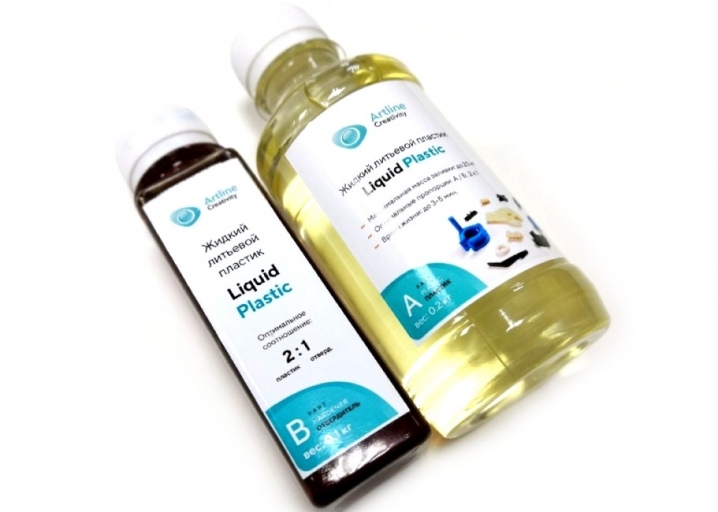
For pouring tables
A distinctive characteristic of this formula is that it was originally created for working with wood. Now the product is actively used for any porous surface. High-quality gas output ensures 100% transparent filling layers.
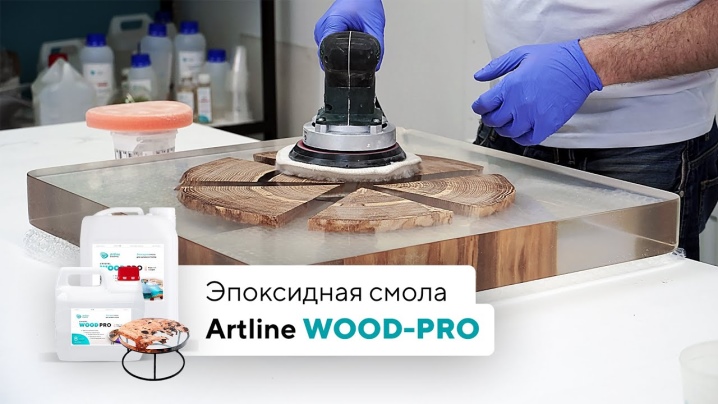
The resulting layer is extremely easy to process, and is also characterized by incredible strength and resistance to UV rays. Even after many years, such a surface will not lose its color and attractiveness.
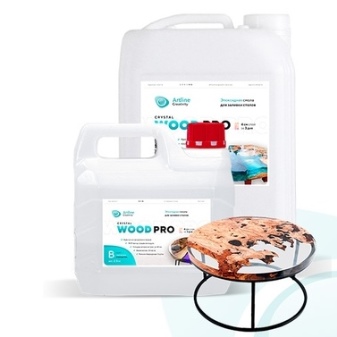
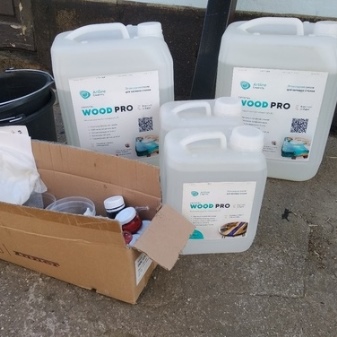
Harm to health
Many users are concerned about the harmfulness of epoxy-based resins. After curing, the epoxy is completely harmless to the health of children and adults. But in the factory, when a substance hardens, particles of the sol fraction often remain in the composition, in a dissolved state it is dangerous to humans. However, in production, most of the processes are automated, so the risk of harmful effects of such products on the body is minimized.
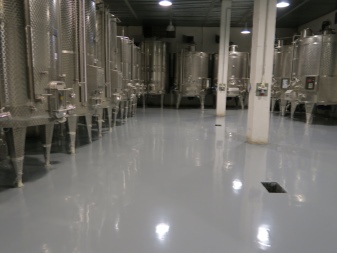

But before curing, epoxy is characterized by toxicity and can have a negative effect on human health. The safety rules establish that it is possible to work with ES only with personal protective equipment. First of all, this concerns the respiratory system, since the resin releases harmful vapors before the final solidification. Work with ES should be in a ventilated room or in a room with an exhaust hood. Only a respirator can completely protect the respiratory system from inhaling their vapors. If you accidentally swallow the resin or get it in your eyes, seek immediate medical attention.
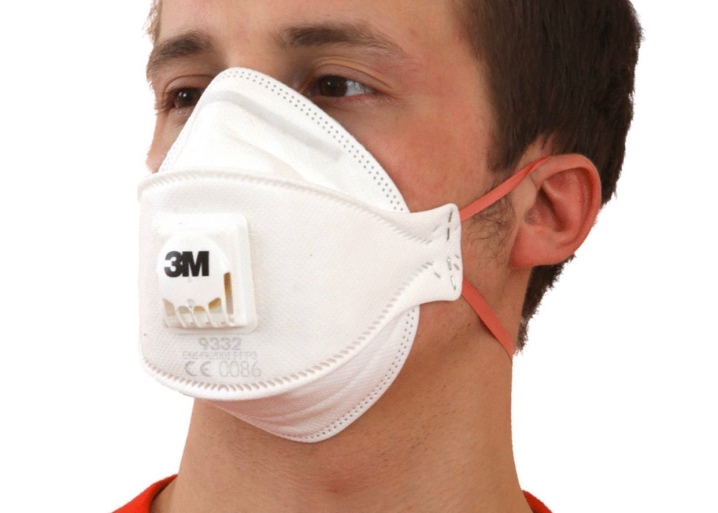
How to choose
In order for the epoxy resin from Artline to fully satisfy the wishes of the master and cope with the tasks assigned to it, you need to pay close attention to the selection process.First of all, you should pay attention to the type of resin
If this is a universal option, then it can be used for any work, including making jewelry
First of all, you should pay attention to the type of resin. If this is a universal option, then it can be used for any work, including making jewelry
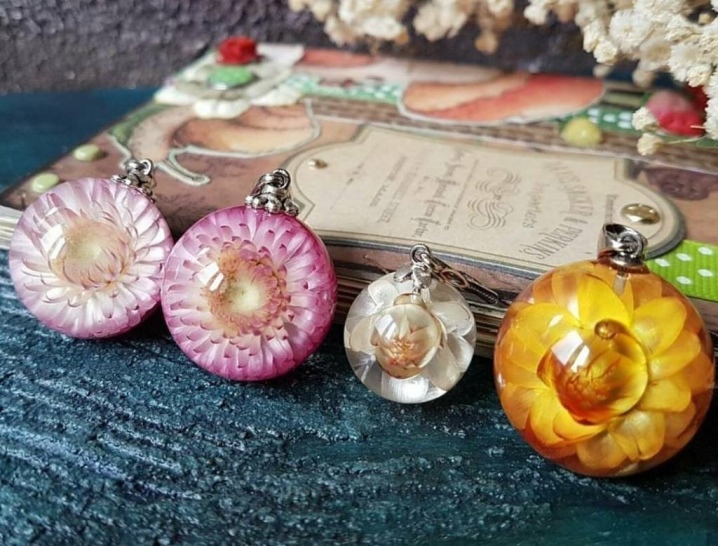
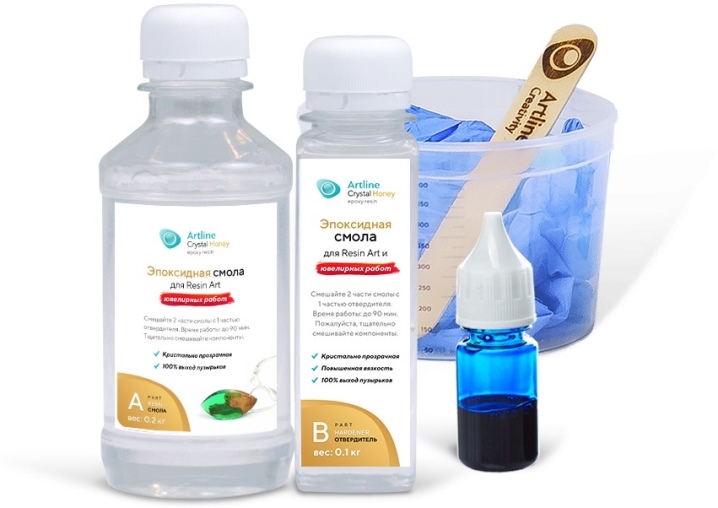
It is also worth giving preference to this option, if necessary, to use the product in arts and crafts.
When choosing a universal option, it should be borne in mind that the thickness of the fill can usually not exceed 15 mm, however, in some cases, special types allow you to fill up to 50 mm. An attempt to fill in a larger volume may lead to boiling and a chemical reaction, as a result of which the surface of the material will be damaged, and the product may become completely unusable.
It is also worth choosing universal options if you need to get a high level of adhesion.

Another type is epoxy, which has a high viscosity, which allows it to form a raised dome during the pouring process. Such material will be an excellent choice when you need to create various patterns. The result is a fairly voluminous image. This effect is achieved due to the fact that the resin is applied in layers. This provides the artist with the ability to overlay multiple layers at the same time without fear of blending.
The choice of a specific type of Artline epoxy depends on the specific purpose for which it will be used:
For the treatment of countertops, a high-build fill is the ideal solution. In addition, such a material should not turn yellow during use, therefore it should be distinguished by its ability to withstand the effects of ultraviolet rays.
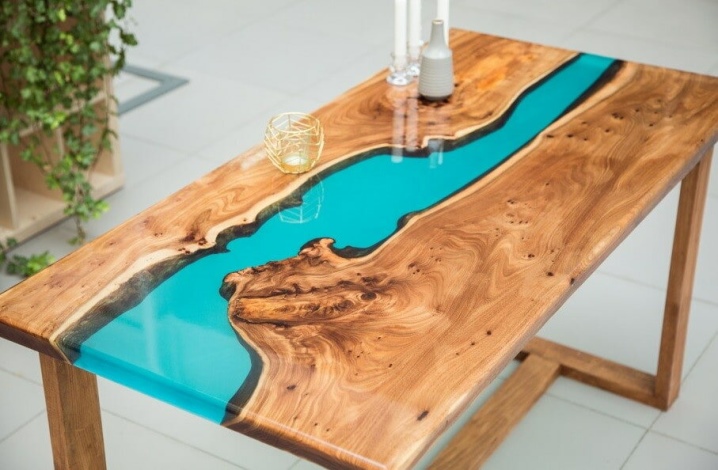

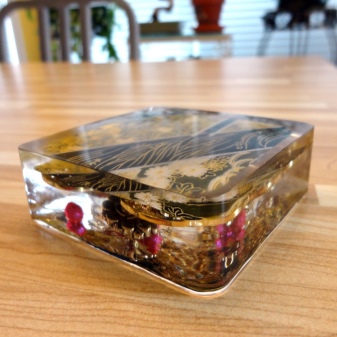
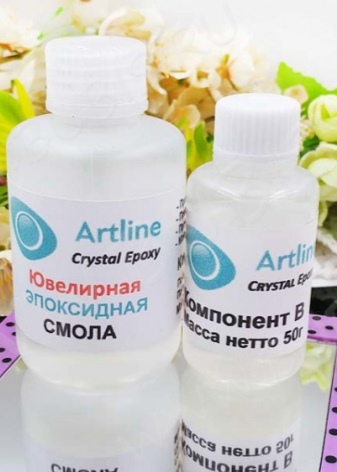

Where is it applied?
All types of epoxy can be divided into groups according to their areas of application. So, in the construction industry, epoxy is used for marking on highways, for decorating self-leveling floors. As a decorative material, it has become widespread in repair and finishing works. As a part of carbon and fiberglass, it has found application in repairing reinforced concrete structures and airports. Epoxy allows the bonding of bridge structures.
Resin is used to produce compressor blades and boat propellers. They have found application in the production of tanks and vessels. In mechanical engineering, resin can be used to correct casting defects. The density of the composition allows for the production of springs as well as springs. The polymer has found wide application in the field of aircraft construction - resin-based composite components are used to cover the wings and components of a jet engine, as well as empennage and competition of nozzles. It is from ES that fuel tanks and housings of parts in rockets are made.
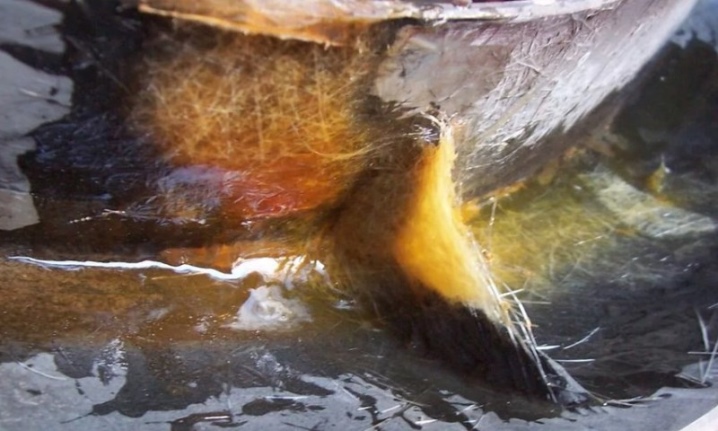
Resins in the food industry have limited use - some compounds are used in the manufacture of cans. Due to its environmental friendliness, epoxy can be used in the household area without restrictions. It is used to create jewelry and interior decor elements. Resin is used to make small sculptures and furniture.
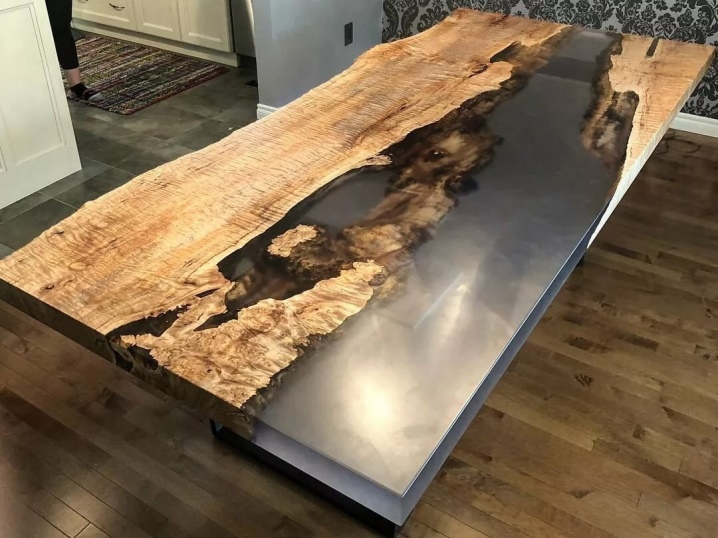
What it is?
Epoxy is an oligopolymer. It consists of a number of epoxy groups, which polymerize when reacted with a hardener. The most in demand are products obtained as a result of the synthesis of polymers based on bisphenol and phenol epichlorohydrin. ES has a liquid consistency, its specific gravity is 1.07 g / cm3. It can be transparent or colored, in most cases in stores you can find substances of white or yellowish-orange colors, they look like liquid viscous honey.
The product has high moisture resistance parameters, is able to adhere to a wide variety of substrates - metal, wood or uncured laminate. The shelf life is quite long - up to 1 year.
Of the minuses, the high cost of the product and the need to observe safety precautions during work can be noted. The product requires the use of additional components - hardeners, plasticizers
In addition, skill is required to create decorative coatings.
Grades and CV
I AM
tried to evaluate each of
considered technological
resin parameters ranging from 1 (poor) to 5 (excellent).
I will say right away that it turned out to be difficult,
highly dependent on preferences of the master.
One wants the time of the primary
thickening was as much as possible (score 5),
but then the time of full
curing (grade 1), for the other vice versa
priority is fast curing (5) and low
lifetime (1). With a degree of density and
the convenience of degassing is the same situation: if
one "pulls" by 5, then the second by 1. Mine
the compromise solution was as follows.
|
PEO-510KE |
Magic |
Epoxy |
Poly |
D-line |
Artline |
|
|
Convenience |
5 |
3 |
4 |
3 |
5 |
5 |
|
Water bath reaction, |
5 |
3 |
4 |
3 |
4 |
5 |
|
Degree |
4 |
3 |
5 |
4 |
4 |
4 |
|
Optical transparency, |
5 |
3 |
5 |
|||
|
Total points |
19 |
12 |
Note
to the table.
Sign
reflects the uncertainty in the parameter
resistance of resins to yellowing.
First
the place was divided among themselves by resins PEO-510KE-20/0
and Epoxy Crystal PLUS. I do not have enough speed at PEO-510KE-20/0
solidification, at Epoxy
Crystal PLUS - more
liquid consistency. But this is me already
find fault. Both pitches are perfect, boldly
you can recommend any of them to the master,
and a beginner.
Second
the place was shared by the "twins" D-lineCrystalEpoxy
and ArtlineCrystalEpoxy.
If not for the unpredictable behavior and
oddities with degassing, could be
perfect.
On
3rd place Magic
Crystal 3D and Poly
Glass. The first is because of
incomprehensible behavior of the last parties and
yellowness, the second - due to density and stains
in flat castings.
COMPARISON
JEWELRY RESIN. Introduction. 06.03.2019
COMPARISON
JEWELRY RESIN. Mixing ratio.
15.03.2019
COMPARISON
JEWELRY RESIN. Degassing and water bath.
26.03.2019
COMPARISON
JEWELRY RESIN. Thickness and hardening.
04.04.2019
COMPARISON
JEWELRY RESIN. Transparency, fill,
treatment. 16.04.2019
COMPARISON
JEWELRY RESIN. Grades and CV. 24.04.2019

